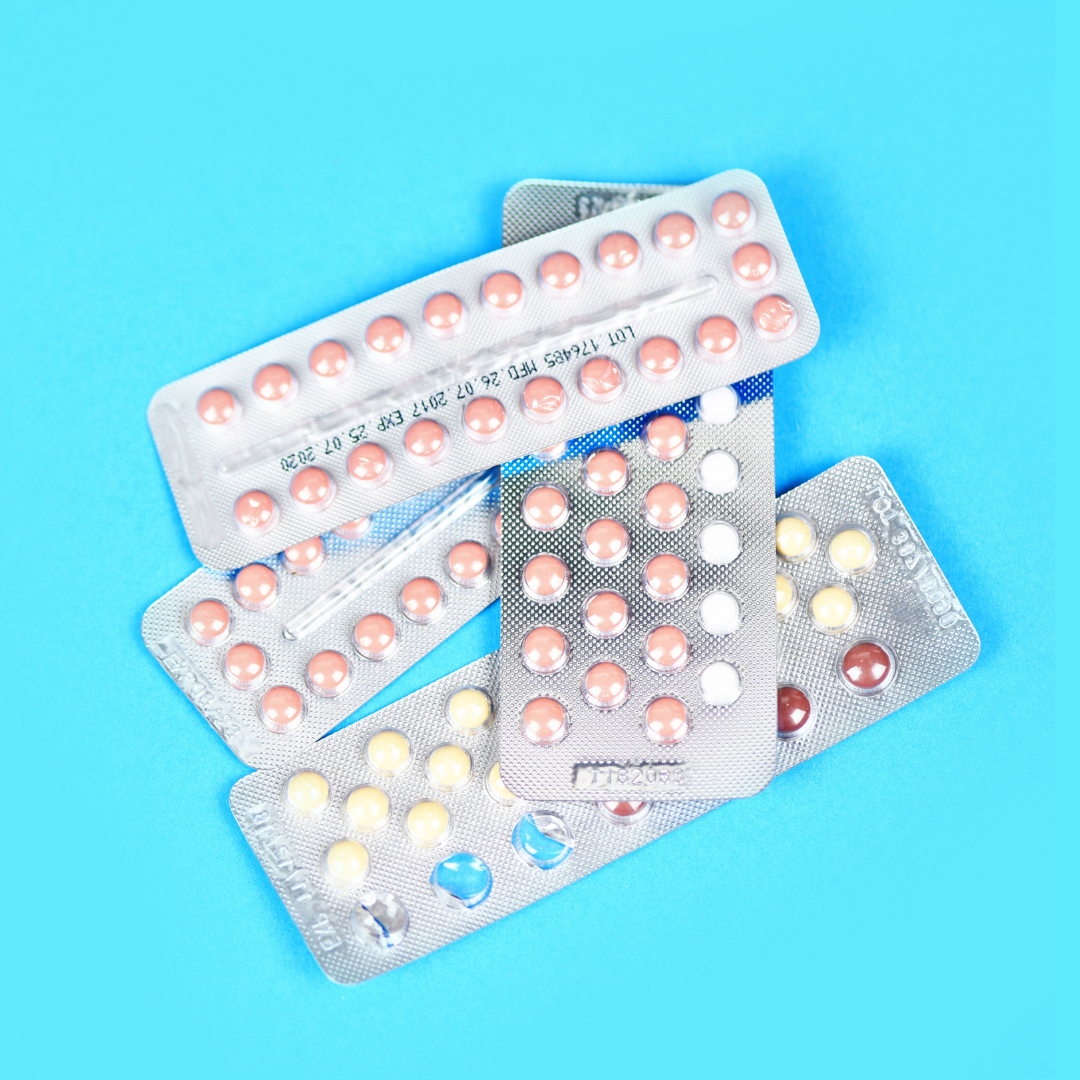Don’t dismiss the pill as a helpful form of hormone therapy during perimenopause
Symptoms during early perimenopause are usually due to fluctuating hormone levels, disordered ovary-brain communication and often high levels of oestrogen. Standard MHT is unlikely to help until later in perimenopause when your period starts to skip and oestrogen starts to fall more consistently.
Combined oral contraceptive pills (COCP) contain oestrogen and are available as pills, patches, or vaginal rings They can play a valuable role in managing the menopause transition for individuals who have not yet reached menopause. While COCP is not suitable after the final menstrual period, it offers significant benefits during the transition phase.
How Does COCP Work?
COCP combines oestrogen and progestin, two hormones that work together to suppress ovulation by inhibiting the release of follicle-stimulating hormone (FSH) and luteinising hormone (LH). This prevents ovarian follicles from maturing beyond a certain stage, stabilising hormone levels and preventing ovulation. Consequently, users experience more consistent oestrogen levels, which can alleviate menopause symptoms such as mood swings, irregular periods, and heavy menstrual bleeding. Additionally, the progestin in COCP helps thin the uterine lining, reducing or even stopping bleeding.
Why Use COCP During Perimenopause?
The perimenopause, (formally referred to as the “menopause transition”), is often characterised by unpredictable hormonal fluctuations. FSH levels are elevated, while oestradiol levels are frequently normal to high, not typically starting to drop until periods start to skip. These fluctuations can cause symptoms such as mood changes, headaches and irregular periods. COCP helps stabilise these hormone levels, providing relief from these symptoms. By suppressing FSH and LH, COCP prevents ovulation and replaces erratic hormonal levels with stable ones.
Benefits of COCP During Perimenopause
Reliable Contraception
While fertility declines significantly after the age of 45, there is still a risk of pregnancy. Pregnancy at this stage is more likely to involve chromosomal abnormalities or other complications. Contraception is generally recommended until women over 45 have been without a period for one to two years. For those without cardiovascular risks or blood clot issues, continuing COCP until age 50-55 is generally considered safe.
Managing Mood-Related Symptoms
COCP is a first line hormonal treatment for managing mood-related conditions such as premenstrual syndrome (PMS) and premenstrual dysphoric disorder (PMDD), which often worsen during perimenopause. COCP helps by providing stable hormone levels, reducing these symptoms for many women. Non-cyclic mood changes such as irritability, depression and mood swings can also be improved by COCP, particularly if they have surfaced as the periods become irregular.
Addressing Heavy or Irregular Periods
COCP is also a practical solution for heavy or irregular periods by suppressing ovulation and stabilising the uterine lining through the action of progestin. While alternatives, such as a levonorgestrel intrauterine device (IUD) paired with standard MHT, are available, COCP remains a convenient option for those accustomed to using it.
Comparing COCP to Menopausal Hormone Therapy
COCP typically provides enough oestrogen to make it effective for treating hot flushes if they are a symptom of perimenopause. Different COCPs contain various types of oestrogen, including ethinyl oestradiol, oestradiol valerate, and 17 beta-oestradiol. Each has unique absorption rates and potencies, influencing its effectiveness in managing menopause symptoms. For instance, ethinyl oestradiol, found in many oral contraceptives, can reduce hot flushes by 80-90%.
Newer COCP options, such as those containing oestradiol (eg Zoely) or oestetrol (an oestrogen produced by the foetal liver) (eg Nexstellis), may offer fewer side effects and perhaps a lower risk of blood clots. These are both body-identical forms of oestrogen.
Many women mistakenly believe that COCP contains doses higher than MHT and that MHT is “more natural”. This is not always so. For example, the common oestrogen dose of a MHT tablet would be 1 or 2 mg of oestradiol, whereas the same body-identical oestradiol dose in a pill such as Zoely, is 1.5mg. Body-identical progesterone often used in MHT is not potent enough to prevent ovulation, so all COCPs contain a “synthetic” progestin.
Transitioning off the COCP
You will not know where you are in your menopause journey whilst using the COCP. When it’s time to stop using COCP, whether due to age or no longer needing contraception, transitioning to MHT or ceasing hormone therapy can be managed smoothly. To avoid a sudden drop in oestrogen levels, many doctors recommend tapering down by switching to a lower oestrogen dose pill or replacing the pill with MHT.
For individuals choosing to stop hormone therapy altogether, it’s important to note that the body may take time to adjust. While some may not experience the onset of menopausal of symptoms, others might find symptoms gradually appear. If this happens, revisiting hormone therapy or exploring alternative treatments may be necessary.
Progesterone-only contraceptive
Some “mini-pill” formulations can also prevent ovulation. Slinda, (4 mg drospirenone) is such a pill and can be effective in regulating chaotic hormones in perimenopause whilst providing contraception. The body still makes oestrogen when using the mini pill, although some symptoms of low oestrogen due to ovarian ageing may surface. If this happens, supplemental oestrogen, as is used in MHT, can be added. There may be a small increase in the risk of blood clot using drospirenone, but it is much safer for women at risk of clots that the COCP.
Oestrogen-containing contraception offers an effective and convenient way to manage many symptoms of the menopause transition. It provides stable hormone levels, regulates periods, and ensures reliable contraception. Transitioning to MHT or ceasing hormone use can be managed with various approaches to minimise disruptions.
While COCP isn’t suitable for everyone it remains a valuable option for many navigating menopause.
This information is for general educational purposes only and does not constitute medical advice. Please see your health professional for advice that is personalised to you.
Key Take Aways
The contraceptive pill is a useful hormone treatment during early perimenopause.
Contraceptive pills can control symptoms of hormonal fluctuation, provide stable oestrogen levels and contraception and control heavy or irregular periods.
Some newer pills contain body-identical oestrogen at similar doses to MHT.






